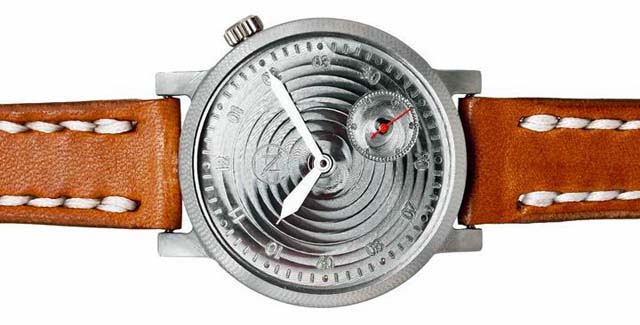

Lethbridge Alberta - A local watch company is looking back in time for inspiration.
The Coalbanks - Dowlais 1884 Edition is a $3,250 watch made by local watchmaker NOVO watch.
They draw on the history of the Lethbridge area as a coal-mining town, and its connection to the rail lines that made early growth and development in the city
possible.
The watches are made with steel re-purposed from train lines in the area dating back to 1884.
Steve Christensen, president of NOVO Watch, said once the company settled on the idea for the watches, they contacted the owner of the old Galt No. 8 mine and
pitched the idea.
There was some interest in the project, enough that they were granted access to the mine in order to take a look around.
"That was the start of the process," said Christensen.
The rail line was chosen due to the quality of the steel.
"That, to us, was very important due to the quality of the watches," he said.
Transforming the steel into a workable design took many hours of trial and error involving the machinist and a forger working the metal in a
forge.
"Once we figured it out, we found out how much material we needed," said Christensen.
"And each watch needs approximately two pounds of steel."
Christensen learned a lot about the history of the steel and the mine during the course of the project.
The rail line steel was made in the Dowlais Ironworks in 1884, the watches are named after the source of the steel.
At the time, Dowlais, located in Wales, was the largest steel producer in the U.K.
"The steel was brought over by Canadian Pacific Railway and it became an integral part of the mine area around No. 8," said Christensen.
"When we take this piece of rail, the history that it's seen over a century has been helping to grow Lethbridge. It's almost a foundational piece of the
city, that we get to repurpose and give a new life on somebody's wrist, rather than just let it sit in a field and be done with its work."
The company has made a few watches already, but are planning on making a maximum of 15.
New orders will be completed as they come in.
It takes about four weeks to complete a watch.
He said he has had a lot of fun working with a number of different local artists in order to complete the watches.
Normally, watches have very limited "human touch points."
While discovery, forging, and machining all take place in Lethbridge, a local leather worker makes the straps, and a Magrath company handles packaging by
creating boxes out of re-purposed barn wood.
"And then I'm the assembler," Christensen said.
"I get to do this very cool thing few people get to do. The watches travel through all these hands. And by the time they are completed, you have a
historical piece, but all sorts of people put time and effort into making it."
This could be the start of more unique watch ideas in a similar vein for NOVO watch.
"Looking forward in the future, it's one of those products that will never get old," Christensen said.
"We can do this limited run of this train track. And then maybe for the next one we find this old tank that has a wild history. Or maybe we travel to
Germany, and find a piece of history there we can use."
"It's one of those things where we can never get bored, and we can always be creative and find something new."
J.W. Schnarr.
under the provisions in
Section 29 of the Canadian
Copyright Modernization Act.


